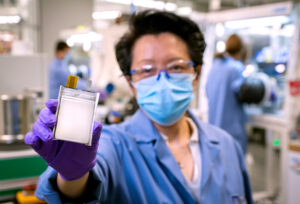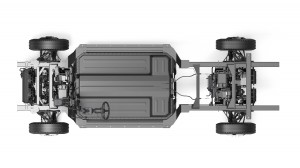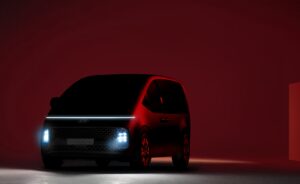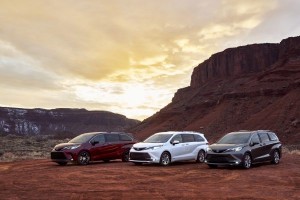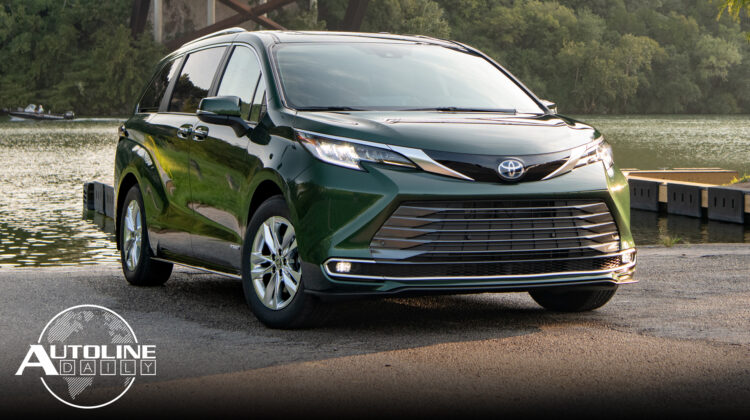

Follow us on social media:
Runtime: 9:48
0:08 BMW Invests in CO2-Free Steel
0:44 GM Teams with SES To Improve Batteries
1:46 Bollinger Reveals Class-3 EV Platform Pricing
2:38 Hyundai Unveils Wild Van Concept
3:35 Sienna’s Hybrid Powertrain Disappoints
5:46 ZF coPilot L2 Update
6:01 Australia Enacts Legislation to Protect Car Dealers
7:20 EVs Aren’t the Only Way to Fight Climate Change
Visit our sponsors to thank them for their support of Autoline Daily: Bridgestone, Intrepid Control Systems and Magna.
This is Autoline Daily, the show dedicated to enthusiasts of the global automotive industry.
BMW INVESTS IN CO2-FREE STEEL
Conventional steel is produced in smoldering blast furnaces, which produces carbon dioxide. But BMW is investing in a way to make CO2-free steel. It’s teaming with Boston Metal, which uses an electrolysis cell to produce pig iron that is later turned into steel. If the electricity for the cell is generated with renewable energy, then the steel production is carbon free. The next step will be to set up demonstration facilities for the process over the next few years to see if it can be developed for use on an industrial scale.
GM TEAMS WITH SES TO IMPROVE BATTERIES
General Motors announced it’s jointly developing better EV batteries with a company called SES. It used to be known as SolidEnergy Systems, but despite the name, it doesn’t make solid state batteries. They gave up on that. Instead, SES developed an ultra-thin lithium-metal anode for batteries. The specs are impressive: 400-500 watt hours per kilogram. That’s 43% to 78% better than the best batteries used today. And it matches Tesla’s claims for its next generation battery. SES also claims over 1,000 watt hours per liter. That’s 43% smaller and lighter than the best today. Last year at Tesla’s Battery Day, Elon Musk said their new battery would be available in 3 to 4 years. SES and GM say they’ll go into pre-production in 2023. So now the race is on to see who gets there first.
BOLLINGER REVEALS CLASS 3 PLATFORM PRICING
EV startup Bollinger announced pricing for its B2 CHASS-E Cab and CHASS-E platforms. The rear-drive B2 costs $70,000, the dually version starts at $72,500 and with AWD, the price jumps to $100,000. The rear-drive CHASS-E costs $55,000, the dually version is $57,500 and with AWD it costs $80,000. Bollinger is coming out with its own SUVs and trucks based on the Class 3 platform but it’s also going to supply them to other companies, which will use them for things like commercial trucks, defense vehicles, kit cars, autonomous cars and emergency vehicles. Deliveries will start in 2022.
HYUNDAI UNVEILS SLEEK VAN
Hyundai is teasing a wild van it’s going to come out with, called the STARIA. There’s very little information to go on, like we don’t know if it will be gas, diesel, electric or some combination of those. We can tell you it will be used for both businesses and families and available in select markets, but that’s all we’ve got for now.
SIENNA’S HYBRID POWERTRAIN DISAPPOINTS
The all-new Toyota Sienna minivan strutted its hybrid-only wheels through the Autoline Garage and two things jumped out at us right away. First, the powertrain stinks. It pairs a 2.5L 4-cylinder engine with either a single motor or dual setup for all-wheel drive, which combines for 245 horsepower. Sure that’s plenty of power to get you around and we were averaging an impressive 27 MPG combined, but because power is sent through a CVT, it constantly sounds like the engine is being overworked. Over time it’s one of those things that falls to the background, until you have to get up and go and that awful sound comes roaring back. Like the PHEV Prius Prime or RAV4 Prime, there needs to be a Sienna Prime with a bigger battery pack that allows the wheels to be driven in electric-only power more often. We think it would make the driving experience much more pleasurable. The second thing that stands out, is that the Sienna has an awesome chassis. It rides nice on the road, soaking up the bumps and it felt well planted when entering the freeway on a clover leaf. It also does a great job of keeping outside noises outside of the cabin. Sticking to the inside, even though we had a top-of-the-line Platinum model, the interior looks too plastic-y. Some soft-touch, premium materials were used, but we think too sparingly. It would have been nice on top of the door panels. But we did have a lot of quality content with our model. Big center screen, inductive charging mat on the dashboard and a rear seat entertainment package for the kiddies with the ability to plug into an HDMI outlet or mirror your phone. Although I think more customers are starting to expect more than one rear screen. Our Sienna Platinum was priced at over $53,000 and while it’s a very good vehicle overall, I think it’s leaving the door open for other automakers to pass it in the premium minivan space.
Yesterday we reported on ZF’s CoAssist L2 system that Donfeng is using. We said it uses a camera from MobilEye, but ZF tells us it actually makes the camera, which is based on MobilEye’s technology.
AUSTRALIA ENACTS LEGISLATION TO PROTECT CAR DEALERS
When GM abandoned the Australian market, its dealers and customers were hopping mad. So was the government. So legislators enacted a code of conduct. Automakers who willfully break franchise laws or reject legitimate warranty claims can be fined up to $10 million. GM and Honda dealers say they are not being fairly compensated as those automakers back out of their franchise agreements. The Australian Automotive Dealers Association says the new law will protect the investment that dealers make in their franchise.
And coming up next, John says EVs aren’t the only way to fight climate change.
EVs AREN’T THE ONLY WAY TO FIGHT CLIMATE CHANGE
The auto industry is pretty much on board for fighting climate change, but it’s told the only way it can do that is by making electric cars. I think that misses the opportunity to come up with faster and cheaper solutions.
The problem with internal combustion engines is not the engines. It’s the carbon in the fuel they burn. Carbon neutral fuels, like efuels, can take care of that problem. In Europe, there’s a big effort underway to develop efuels and Mazda and Porsche are involved in that effort. In fact, Porsche says if Formula One adopts efuel, it will start racing in Formula One.
More importantly, we need to look at total life-cycle emissions of greenhouse gasses from cars, not just what comes out the tailpipe. We need to count emissions from mining raw materials, making cars, driving them and recycling them.
Manufacturing EV batteries uses massive amounts of energy. If that energy comes from renewable or nuclear sources, no problem–at least from a GHG standpoint. But most grids rely on fossil fuels. In China, it’s mostly from coal.
Recycling EV batteries is an issue. A number of companies are working on ways to recycle batteries in a high-volume and cost-effective way. I’m sure that will get resolved, but so far it’s being done with small pilot lines.
It’s going to take decades to turn the global fleet over to electric. I think we can come up with faster and cheaper solutions if we take life-cycle emissions into account. After all, the goal is to fight climate change. So why not create more options to solve it sooner?
And that wraps up the week for us, see you on Monday.
Thanks to our partner for embedding Autoline Daily on its website: WardsAuto.com
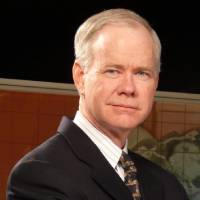
John McElroy is an influential thought leader in the automotive industry. He is a journalist, lecturer, commentator and entrepreneur. He created “Autoline Daily,” the first industry webcast of industry news and analysis.




